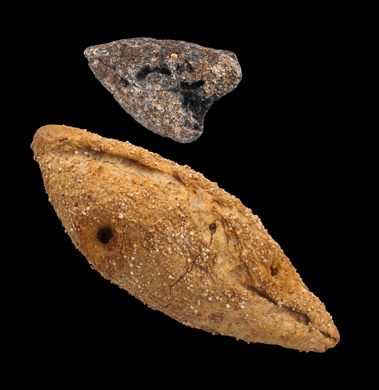Ovelgönne Bread Roll
Dating back to the Pre-Roman Iron Age, this piece of bread is Europe's oldest surviving formed bakery product.
In May 1952, during an archaeological dig at the loam mine of Ovelgönne, Buxtehude, a Helms-Museum staff member Willi Rühland discovered the remains of a charred bread roll in what appeared to be an ancient rubbish pit. Later dated to the early Iron Age, circa 800-500 BCE, the bread roll is the oldest surviving formed bakery product in Europe.
Subsequently the ancient bread roll underwent a lot of examinations, from microscopy to radiography. Evidences revealed that it was kneaded thoroughly and baked at a high temperature in a stone oven, which was fairly clean but not removed of all charcoal inside. It was made without help from yeast or sourdough, but fat may have been added to lighten the dough; there was no crust.
The bread roll was found as a fragment, only half of it surviving. The halving seems to have taken place well before it was deposited in the pit, suggesting the possibility of ritual or religious practice. The details of the circumstances remain unclear, a subject of heated debate—a mystery, even.
Today, the Ovelgönne bread roll is on display at the Hamburg Archaeological Museum (formerly Helms-Museum) alongside a reconstruction model.
Plan Your Trip
The Atlas Obscura Podcast is Back!


















Follow us on Twitter to get the latest on the world's hidden wonders.
Like us on Facebook to get the latest on the world's hidden wonders.
Follow us on Twitter Like us on Facebook